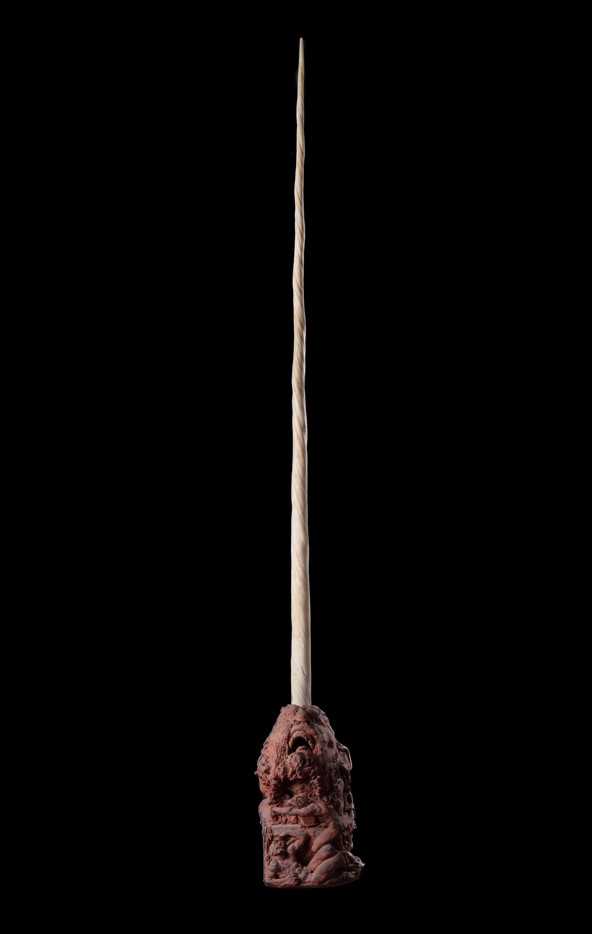
Head of Polyphemus with Narwhal Tusk
Jacques Canonici (b. 1948)
20th Century, Terracotta (Head of Polyphemus), narwhal Tusk
The Cyclops Polyphemus, blinded by Ulysses and his companions, emits a dull cry of despair and torment. In this sculpture, instead of the sharpened olive trunk, Polyphemus' terracotta head is pierced by a mighty narwhal tusk more than two metres long. From the Middle Ages until the early 16th century, narwal tusks were believed to be the extremely rare unicorn's horn, and it was further believed that they possessed aphrodisiac powers and could be used as an antidote to poison. They soon became much sought-after items to be displayed in the Wunderkammern, the cabinets of curiosities that were set up from the late Renaissance onwards to showcase exotic objects, including collections of animals, precious stones, and scientific instruments. Beneath the heartrending face of the monster, in a sort of mise en abyme, we see the Cyclops lying on the ground, brutally awoken and stabbed by Ulysses (the hero's arms and torso have been lost due to damage). In 2000, Franco Maria Ricci commissioned French artist Jacques Canonici (born 1948) to make a terracotta support for the narwhal tusk. The artist sculpted it admirably, perfectly rendering the texture of the giant's flesh.

